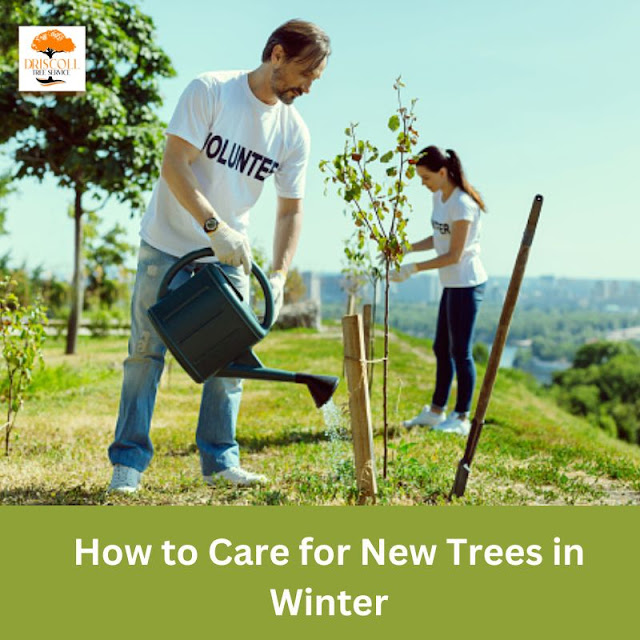How to Care for New Trees in Winter
Trees are the lifeline of the Earth. They beautify your landscape, provide cozy shade, oxygenate the air and boost home value. Trees are mighty; that's why they stand tall and strong. They are the giants of the landscape, and they are invincible. They must be taken care of. Young plants or seedlings need some special care and attention so that there will be healthy growth of roots and shoots. Winter can be a tough season for trees too. Harsh Conditions Mujhe cold winds, bright sun, bitter ice, heavy snow, and Frost. Here are some tips to take care of new trees in winter.
1. Watering:
As per Tree service stone mountain,
the newly planted trees do not have a root system; as a result, the roots need
to be established enough to reach the water, which is deep in the soil during
winter. Just like humans, trees also need Hydration, and they must be hydrated.
Water your roots more adequately before the ground freezes in October and
mid-November. During a Mild winter, you may add a little watering, mainly if
you see any browning in your evergreen.
 |
| How to Care for New Trees in Winter |
2. Mulching:
Tree service Grayson The Mulch protects the
tree soils from frost and helps retain water so that the root system can
receive adequate moisture. The mulch acts as an insulator and keeps the soil
temperature relatively high. It also prevents cold air from penetrating the
root zone of newly planted trees and reduces fall root growth or kills newly
formed roots. You may place a 4-inch layer of mulch around the tree's base
spreading it out at least 2 feet from the trunk. It will help if you remember
not to let the mulch touch your tree's trunk.
3. Wrapping:
Another technique, as per Tree service
Grayson, is wrapping. Newly planted trees or young trees and trees
with thinner bark can benefit the little winter tree protection. It is all
possible because of the sunscald.
Sunscald is when the sun heats up the bark for a short
time, and then the leaves are cracked and dry when the clouds return. Evergreen
needles can also suffer, soaking up sunlight and immediately drying out. The
wrapping is based on the tree you are wrapping. Tree service stone
mountain says that if the temperature is below 35 degrees during
the cold winter, you must consider covering saplings in your yard so the frost
does not damage them. Frost damage can cripple the growth of new shoots. If the
temperature is forecasted to reach freezing at night, followed by warmer, sunny
weather during the day, you must cover your saplings. There is a high chance
that your trees might get affected by the sunscald as the tree barks freezing
and then is exposed to sunlight. However, mature trees aren't more susceptible
to the effects of sunscald but fatal to younger ones. If it doesn't kill your
tree, it could permanently damage the bark and compromise the tree's
health.
To protect the saplings, cover them with protective
material. It will conserve the heat which comes from the soil warmth.
4. Pruning:
During the winter or dormant season, tree growth is
relatively slow, and it is the perfect time to prune plants or trees. Pruning
helps remove dead, damaged, or dying branches so that they can steal energy
from spring growth and do so at a time that reduces the chances of spreading.
5. Call the arborist:
During winter, you must closely monitor the trees'
health. If your tree is sick, you may contact your nearby arborist as quickly
as possible. If you can solve minor issues, you must go for it, and if you're
thinking of challenging and complex problems, you may go to arborists. If an
issue is left undetected and untreated, it might be challenging to save the
trees, and instead, it is preferred to remove them.
Here are some of the points which will help you to check
the health of younger trees:
A) According to Tree service stone
mountain, healthy dormant trees have tiny leaf buds, which
indicates the tree is preparing to lead out in winter.
B) Tree service Grayson says
that if trees don't have tiny buds, you must go for complete tree
introspection. Check for any apparent signs of sic.
Sometimes you don't know when you should call an expert arborist for emergency tree services. Check here for the major reason why you need emergency tree services.



Comments
Post a Comment